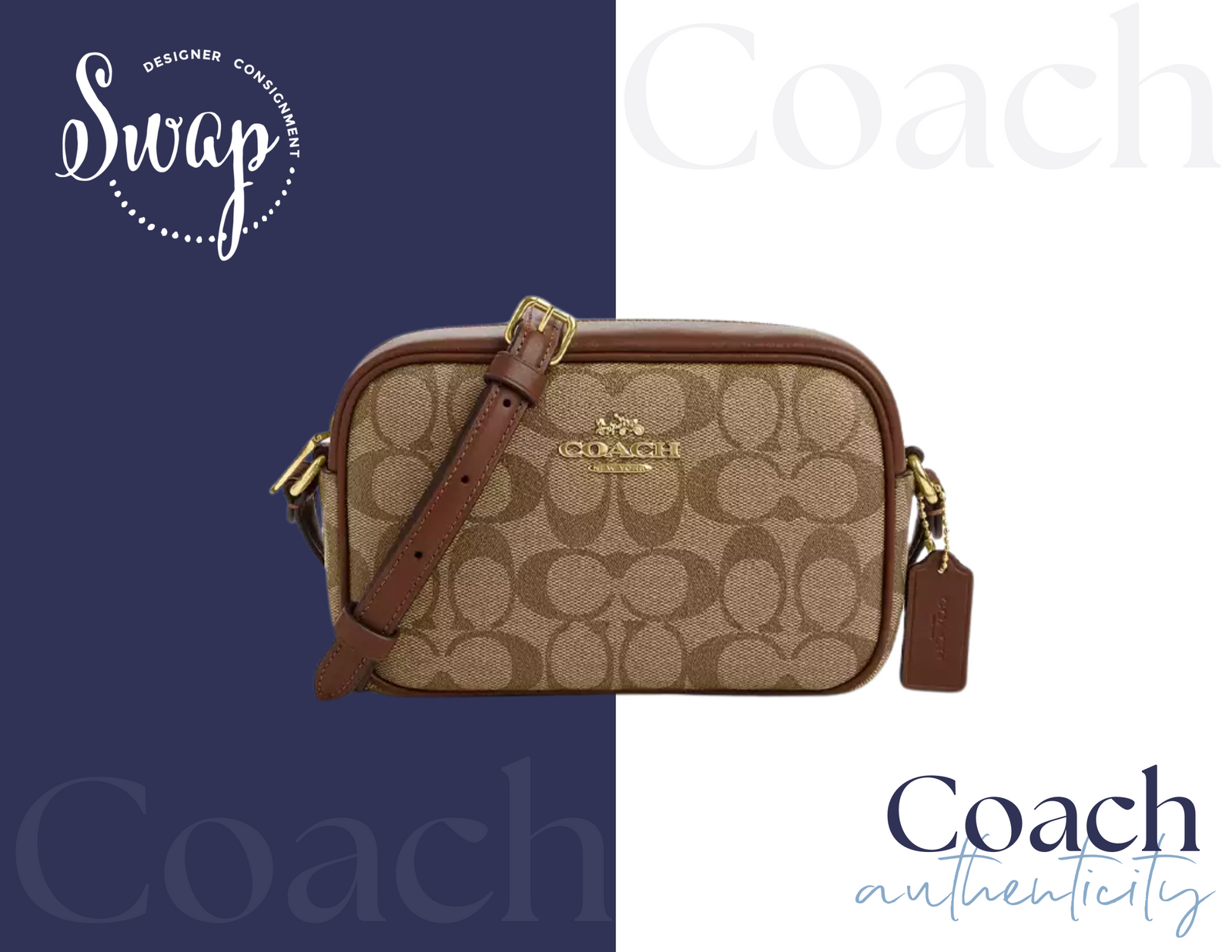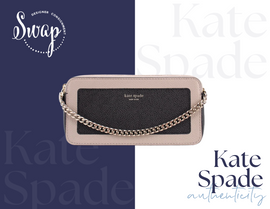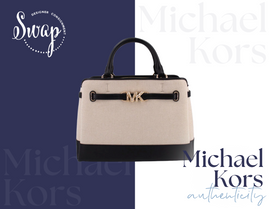Coach Authenticity
Coach has long been a household name in the fashion world—and for good reason. Known for its standout designs, iconic branding, and premium craftsmanship, Coach isn’t just another label; it’s a symbol of timeless elegance and everyday luxury. But what’s the story behind this brand, and how can you make sure the Coach handbag you’re eyeing is the real deal? At Swap Boutique, we’re all about helping you shop smart, so let’s take a closer look.
Coach’s journey began back in 1941 in a small loft in Manhattan, where six leather artisans set out to create high-quality leather goods by hand. Fast forward to today, and Coach has grown into a global fashion force—one that has stayed true to its roots while evolving with the times.
Interestingly, Coach didn’t start out making handbags at all. In its early years, the brand focused on crafting men’s leather accessories. It wasn’t until 1961 that Coach introduced its first women’s handbag, and it was a game-changer. Designed by Bonnie Cashin—an innovative designer who’s now considered a fashion legend—the Coach 9927 (aka the “Cashin Carry”) combined functionality with flair. With its now-iconic turn-lock closure and sleek silhouette, this bag marked the start of something big.
From there, Coach carved out a space as a leader in luxury handbags. Whether it’s their classic leather shoulder bags or modern statement pieces, each design offers that perfect blend of function and fashion.
As Coach became more well-known, the number of counterfeit versions on the market skyrocketed. These fake bags often look convincing at first glance, but there are plenty of subtle details that can help you spot a genuine Coach . Whether you're shopping secondhand or clearing out your closet for consignment, knowing what to look for is key.
Here at Swap Boutique, we’re committed to offering only authentic pieces—and we want our customers to feel confident in what Coach they buy. That’s why we’re diving into the nitty-gritty details that make an authentic Coach bag stand out from the rest.
Logo
Coach’s logo is one of its most recognizable features—and it's evolved over the years, so knowing which version matches which era is a helpful authentication tool.
From 1941 to 2013, the logo featured a serif typeface in all caps, enclosed in a rectangular frame with rounded corners and the phrase “EST. 1941” tucked underneath. Above it, you’d often see a horse and carriage—an emblem that speaks to Coach’s heritage of craftsmanship and luxury.
In 2013, Coach gave the logo a refresh, opting for a bolder, more modern look while still paying homage to its roots. Today, you’ll see two variations in use: one with the revamped horse and carriage in black and white, and another where “Coach” is the main star, set inside a sleek frame.
When checking a Coach bag for authenticity, make sure the logo design matches the time the bag was produced. Watch for clear, crisp lettering with no inconsistencies in font weight, spacing, or alignment. Counterfeit versions often mess up these little details.
Hardware
One of the easiest ways to tell if a Coach bag is legit? The hardware.
Coach uses sturdy materials like brass or nickel for their zippers, clasps, and chains—so authentic bags should feel solid and have a nice weight to them. If the hardware feels super light or flimsy, it’s probably a knockoff.
Also, take a look at the rings that attach the handles to the body of the bag. Real Coach rings are typically seamless or have a polished, near-invisible seam. Some fakes cover their hardware in plastic to prevent tarnishing—real Coach doesn’t need to do that, because their materials are built to last.
Oh, and those zippers? Authentic Coach bags usually use high-quality zippers from trusted brands like YKK and Ideal. They should glide smoothly, not get stuck or feel rough.
Stitching
The stitching on a Coach bag is like its signature—precise, clean, and consistent. Real Coach bags are stitched using top-of-the-line machines, and it shows.
When inspecting a bag, check the tightness, color, and consistency of the stitching. The thread should match the color of the bag and follow straight, even lines. If you see loose threads, uneven stitching, or mismatched colors, chances are you’re not looking at a genuine piece.
Leather
One of the things that sets Coach apart is the quality of its leather. From buttery-soft lambskin to smooth calfskin, the materials are top-tier.
When authenticating a Coach handbag, touch the leather. It should feel supple, soft, and luxurious—not plasticky or stiff. The surface should be smooth with a consistent grain, and the finish may vary from glossy to matte, depending on the style.
Counterfeit bags often use synthetic materials that try to mimic the look of leather but fall short in feel and durability.
The CC Monogram
Many Coach handbags feature the brand’s signature CC monogram pattern—and it’s another great way to determine authenticity.
Look closely at the pattern. The Cs should be perfectly aligned, symmetrical, and follow a very specific format: two Cs facing each other, followed by two Cs side-by-side. This pattern should start at the center of the bag and remain unbroken—even across seams or pockets.
On fake bags, you’ll often notice misaligned Cs, sloppy spacing, or patterns that don’t line up properly. Once you’ve seen the real thing, the differences become easier to spot.
Labels and Serial Numbers
Authentic Coach bags almost always include a serial number, usually found on a leather patch sewn inside the bag (called the “Coach Creed”). This patch also gives a little background about the brand and sometimes about the specific materials or design.
Older bags might not follow the same format. For example:
-
1960s styles often don’t have a serial number at all.
-
1970s and 1980s bags might have just numbers, without letters.
-
Newer bags (especially from 2014–2016) may have a small white tag hidden inside with the style number printed on it.
If the serial number is only inked (not stamped), or if it’s missing entirely from a style that should have one, that’s a major red flag. Also, look for consistency—Coach won’t slap a number on a label that looks off-center or poorly made.
A Coach handbag isn’t just an accessory—it’s a statement. It tells the world that you appreciate quality, design, and legacy. That’s why authenticity matters. Whether you’re purchasing your first Coach piece or consigning one at Swap Boutique, knowing what to look for helps you shop—and sell—with confidence.
At Swap Boutique, we’re proud to curate an ever-changing collection of authentic luxury and contemporary pieces, including genuine Coach handbags that have stood the test of time. So whether you're buying, selling, or just browsing, you’re in good hands.
Coach has come a long way from its small loft in Manhattan, but one thing hasn’t changed: its dedication to craftsmanship, quality, and design. Spotting an authentic Coach bag takes a little know-how, but once you learn the details, it becomes second nature.
We hope this guide helps you feel more confident navigating the world of Coach—because whether you’re building a collection or hunting for that perfect everyday bag, authenticity is always in style.
Stop by Swap Boutique (or browse online) and discover a collection of handbags that tell a story—and maybe find a new favorite while you’re at it. 💼✨




